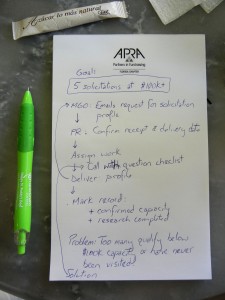 Women may be just under half of the world’s population, but they represent 11% of the 2015 Forbes World’s Billionaires List. Of the 197 women on the list, 29 are self-made billionaires. These may not sound like inspiring numbers, but consider the women on the rise.
Women may be just under half of the world’s population, but they represent 11% of the 2015 Forbes World’s Billionaires List. Of the 197 women on the list, 29 are self-made billionaires. These may not sound like inspiring numbers, but consider the women on the rise.
Elizabeth A. Holmes is the youngest self-made woman billionaire – ever.
And she happens to be female. And she founded a company using her scientific prowess. So if you’ve been reading all the nasty headlines about how women suffer from misogynists harassing them in the tech field, consider that some uber-successful women have simply stepped around that hot mess!
Ms. Holmes is 31 years old, has retained 50% ownership of her company Theranos valued at around $9 billion, and makes time for philanthropy:
- Board President for Improve International, an organization launched by fellow Georgia Tech alumna Susan Davis, which is devoted to education, partnership, and monitoring the sustainability of water and sanitation projects worldwide
- Active mentor for young professionals within Elavon, a payment processing company
- Volunteer at Georgia Tech, participating annually as a judge for TAG’s Educational Collaborative
- Member of Women in Technology and On Board
- Financial supporter of Girls Inc.
The real question is this: If Ms. Holmes wasn’t on the Forbes list, would you even know she existed?
Because I bet there are many sweet major gift prospect gems inside your databases and within your organization’s social circle, but you have no clue.
How Do Women Hide in Your Database?
Of the 168 non-self-made female billionaires on the list, many inherited their wealth from fathers and husbands. But don’t let that fool you. They own it! Did you pay attention to those women before their fathers and husbands died? You should have.
Even before they are widowed these women are usually the influencers and even the drivers behind household philanthropic decisions.
In her debut publication What About Women? prospect research professional Preeti Gill suggests you take a walk through your database …as a woman.
- When a couple makes a gift, do you credit them both?
- When you have a couple as donors, do you create a separate record for the woman?
- What salutation does the woman have?
- Are you paying attention to how she wants her name listed?
How Do Women Hide Among Your Organization’s “Family”?
Perhaps the easiest way wealthy women are hidden and not recognized by the organizations they love is when they are never entered into the database to begin with. Way too many organizations do not track and include volunteers in their fundraising vision and plans. Your prospect research professional can’t find major gift prospects in your database if they aren’t in there.
And what do we know about women? They do their due diligence before investing! And part of that due diligence is often volunteering for the organization.
Wealthy Women are Still Women
Ignore women in your fundraising at your own peril! Women are different from men. They think about money differently. They want different interactions with your organization from men. And they might even give differently from men.
Fundraising with a focus on women will require adjustments and adjustments require time, money and resources.
But very wealthy women are on the rise and they bring rewards:
- Quick to make referrals through word of mouth
- Frequently give unrestricted gifts, small and large
- Loyal donors who advocate to others within their network
Are you interested in learning more and staying current on women in philanthropy? Click here to sign-up for the What About Women? email list.
More Articles You Might Like
- What About Women? Prospect Development from a Female Perspective | Preeti Gill (2015)
- The Richest Women In The World 2015 | Forbes (2015)
- 2015 Forbes World’s Billionaires List | Forbes








